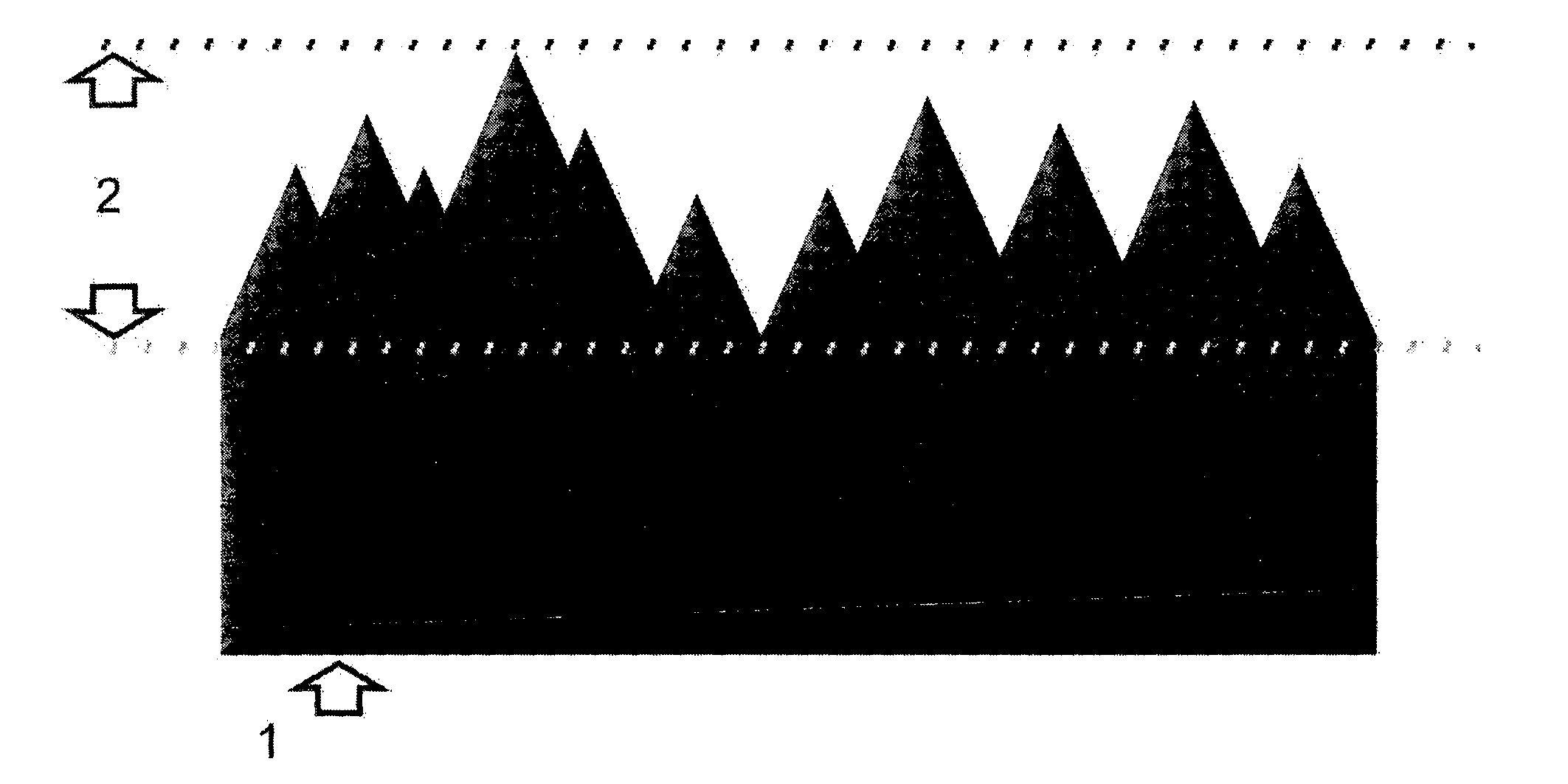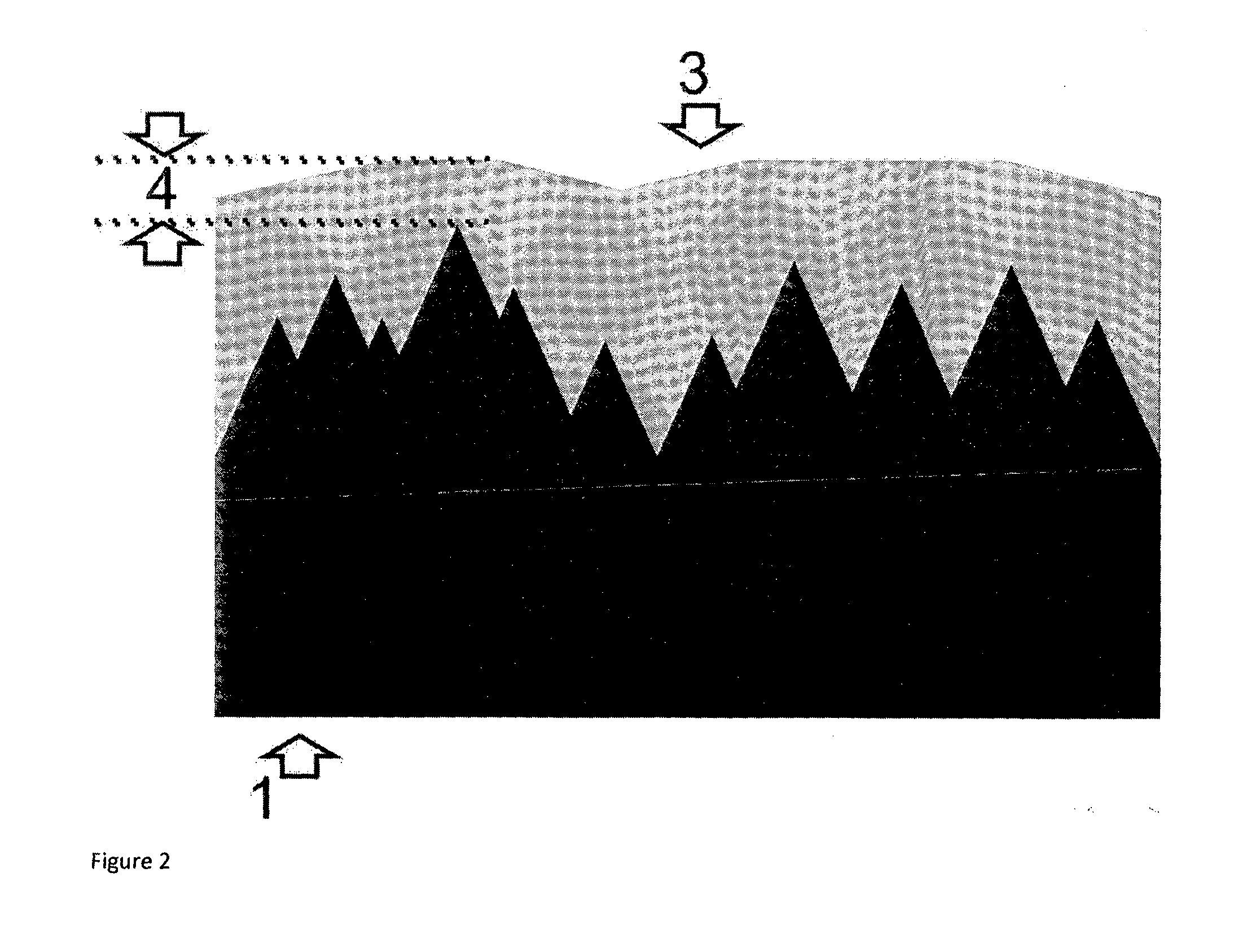Spin-on-glass assisted polishing of rough substrates
a technology of surface roughness and spin-on-glass, which is applied in the direction of vacuum evaporation coating, ion implantation coating, coating, etc., can solve the problems of reducing the quality of polishing, different hardness of the different phases of steel, and limiting the surface roughness obtainable to about 5 nm
- Summary
- Abstract
- Description
- Claims
- Application Information
AI Technical Summary
Benefits of technology
Problems solved by technology
Method used
Image
Examples
Embodiment Construction
[0015]Conventional metallic or ceramic surfaces used in processing industry and other applications are often treated to decrease the surface roughness. This is often done to decrease friction of the surface, to increase reflectivity, or to improve other functional properties of the surface. The prevalent method to decrease the surface roughness is abrasive diamond polishing, where a paste of diamond powder dispersed in a liquid or a wax is rubbed onto the surface, thus decreasing the surface roughness. This method is relative expensive, especially on complex parts or large parts, where the polishing has to be performed manually. Alternatives such as electropolishing is also used, however only a limited number of materials are compatible with this process. It would therefore be advantageous if a process to reduce surface roughness where present, that had the following features: Material independent, applicable to complex and large geometries, cost effective and being fast with a high...
PUM
| Property | Measurement | Unit |
|---|---|---|
| temperature | aaaaa | aaaaa |
| temperature | aaaaa | aaaaa |
| surface roughness | aaaaa | aaaaa |
Abstract
Description
Claims
Application Information
 Login to View More
Login to View More - R&D
- Intellectual Property
- Life Sciences
- Materials
- Tech Scout
- Unparalleled Data Quality
- Higher Quality Content
- 60% Fewer Hallucinations
Browse by: Latest US Patents, China's latest patents, Technical Efficacy Thesaurus, Application Domain, Technology Topic, Popular Technical Reports.
© 2025 PatSnap. All rights reserved.Legal|Privacy policy|Modern Slavery Act Transparency Statement|Sitemap|About US| Contact US: help@patsnap.com



